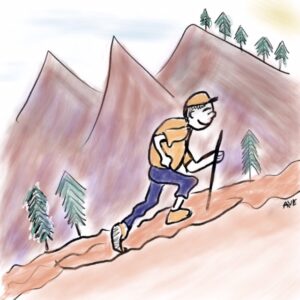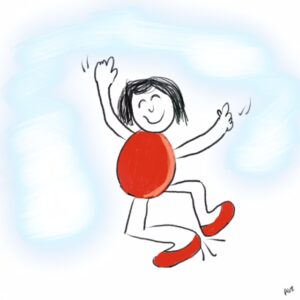
A client recently asked, “How do I manage my negative thoughts? I keep seeing what is wrong, and I feel stressed.” In our busy and full lives, negative thoughts often emerge as unwelcome companions that disrupt our inner ease.
The Normalcy of Negative Thoughts
First, we must normalize that we are not alone in our struggle with negative thoughts and emotions. We have a physiological imperative to survive. Our brains are wired to scan for potential dangers naturally, and with our negativity bias, we find many things to keep us worried and stressed. I told my client, “You are not alone; this is part of our human experience.”
Harnessing Stress for Growth
Not all stress is detrimental. We need some level of stress to be motivated, to grow, and to live fully. It gets challenging when we sense we have too much stress. Of course, many factors, such as climate shifts, work pressures, family demands, polarization, and uncertainty, contribute to our stress. Acknowledging stress is a part of life, and taking conscious steps to manage it becomes paramount.
We can use our awareness of stressful thoughts and sensations as a cue to engage in practices that support our nervous system. We can each build practices into our day that support us. We are unique and must experiment to learn what practices support and calm us.
Pause, Reflect and Cool Down
We can use our sensation of stress as a cue to Stop, Step back and Cool down. Stop and give yourself space to reflect objectively when you sense negativity taking over. Cooling down allows you to shift from a reactive state to a calmer and more open perspective, enabling you to respond effectively.
The Power of Gratitude
Cultivating a sense of gratitude serves as a powerful antidote to negative thoughts. When you are spiraling into negativity, intentionally shift your focus to things that are going well and what you are grateful for. Allow yourself to fully experience gratitude, noticing how it transforms your physiological and emotional state and helps you connect with your inner ease and joy.
Art as a Path to Inner Wellbeing
Engaging with art, whether through observation or creation, can be soothing for the mind. In Your Brain on Art: How the Arts Transform Us, the authors Megsamen and Ross encourage having an aesthetic mindset where simply observing or engaging in some art form promotes joy, health, and overall wellbeing. Drawing or creating something with your hands and engaging in art can calm us at a physiological level. Studies show that art can lower stress hormones, elevating your inner equilibrium. It doesn’t matter the level of artistic skill. Many studies show that art–whether sound, colors, drawing, painting, or sculpture can reduce stress and prolong life. Engaging or enjoying art is something worth trying.
Personalizing Your Practice
As you manage negative thoughts and stress, remember that each person is unique. What works for one person might have a different impact on another. Experiment with various practices, observe the effects on your sense of JOYBeing, and develop a set of practices that resonate with you. Then weave these practices into your daily routine and build habits that support your energy, resilience, and ability to thrive.
There are many practices we can adopt to help us manage our negative thoughts and stress. What are some strategies that you find helpful?










